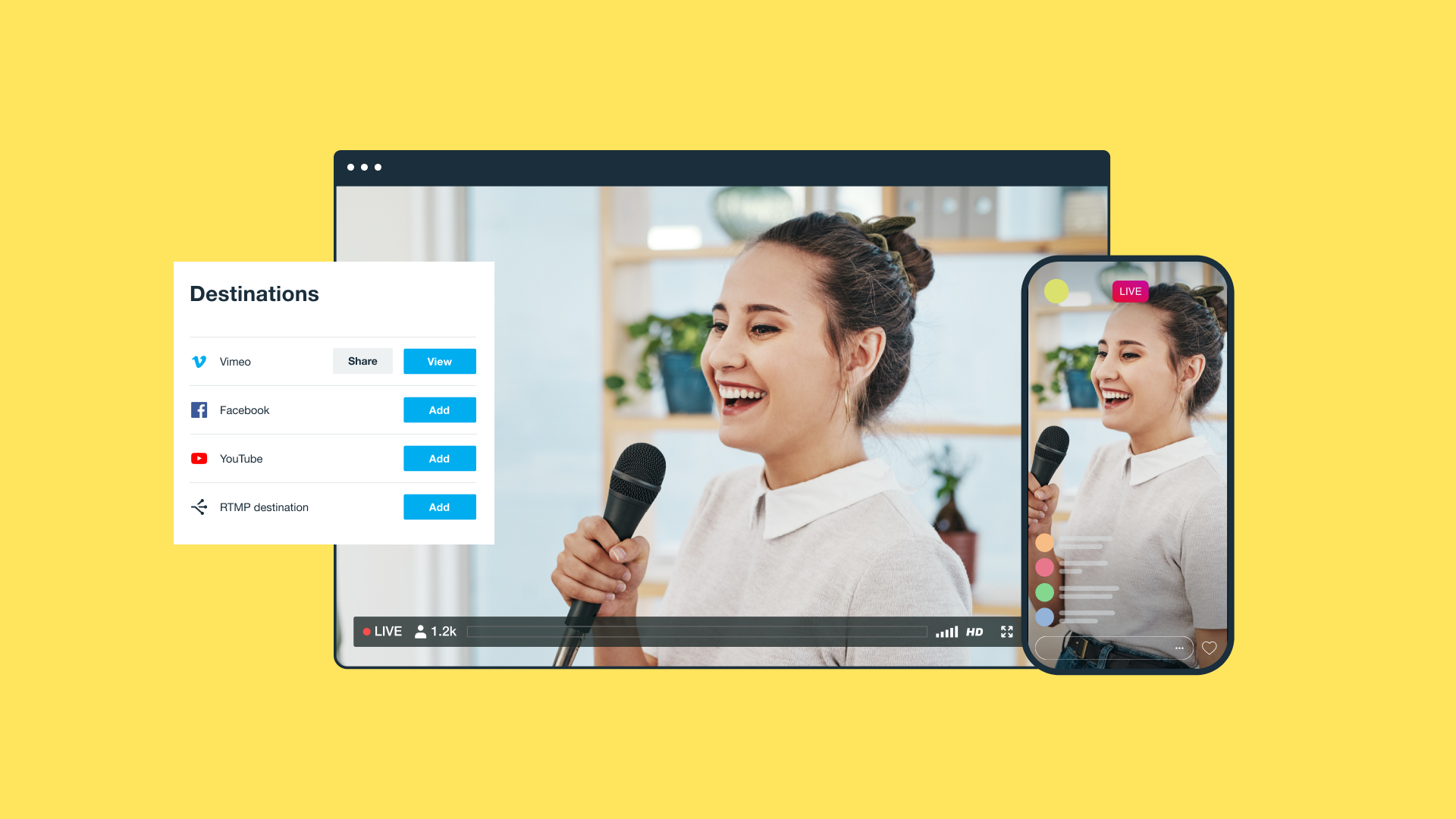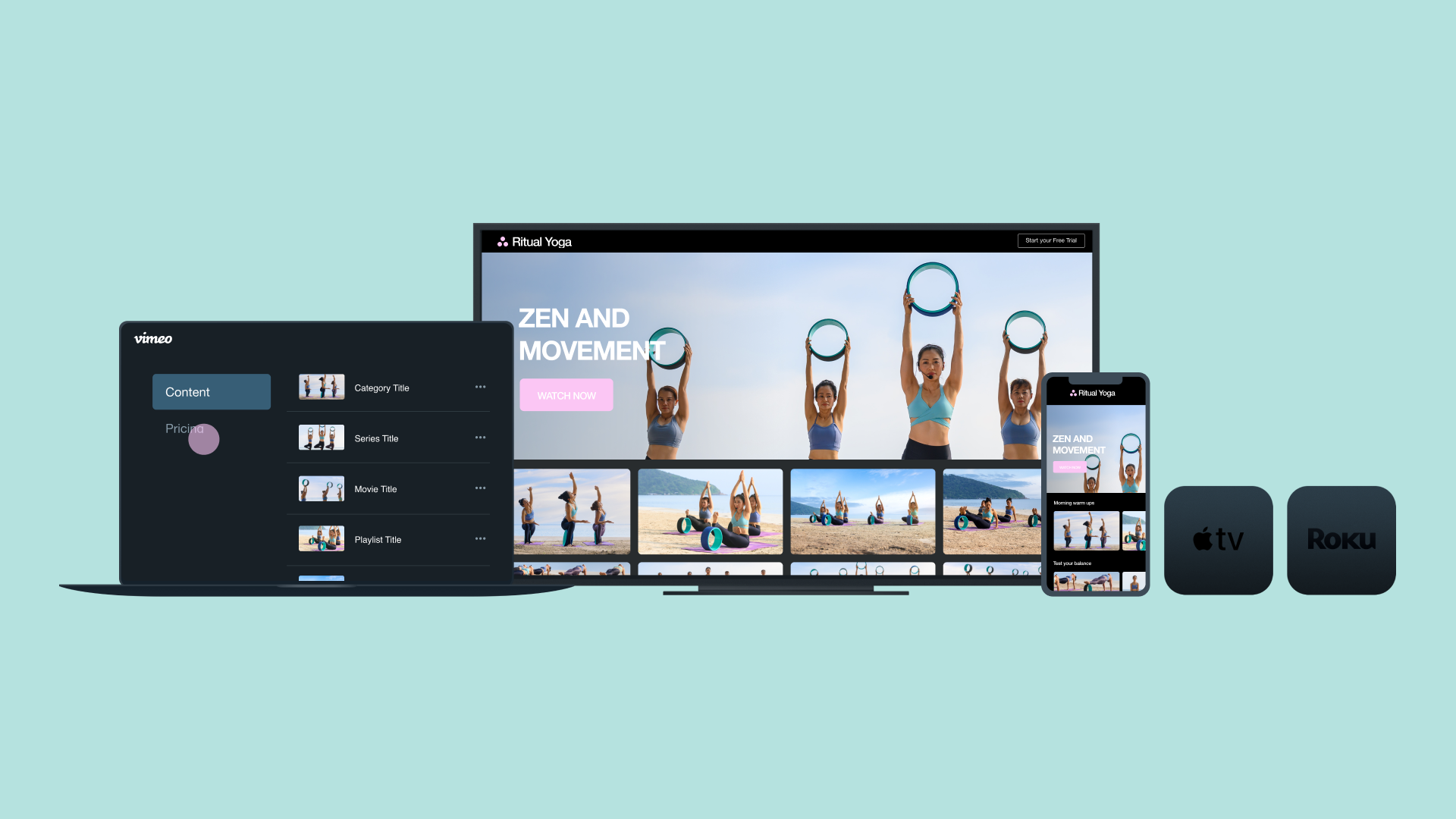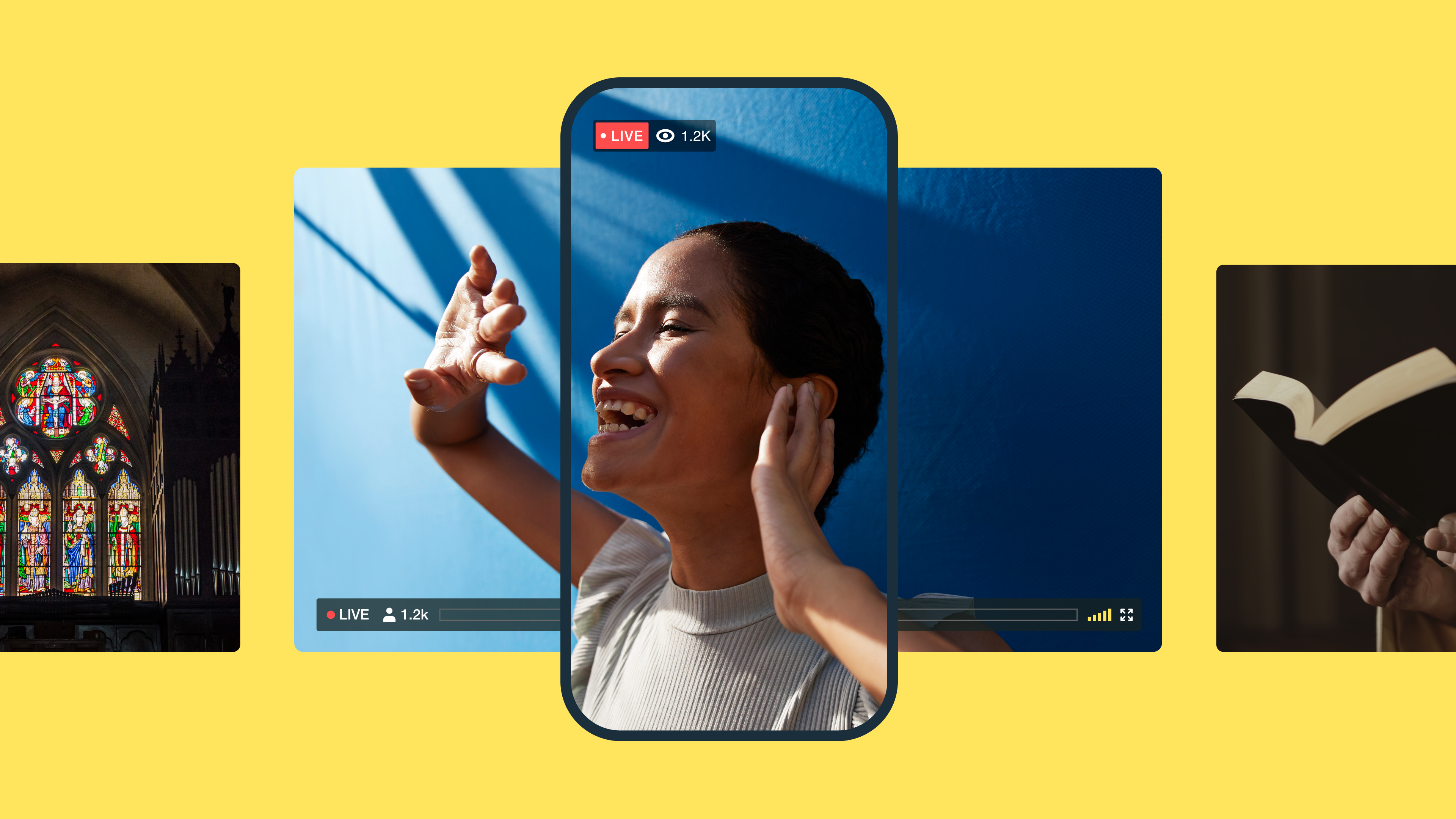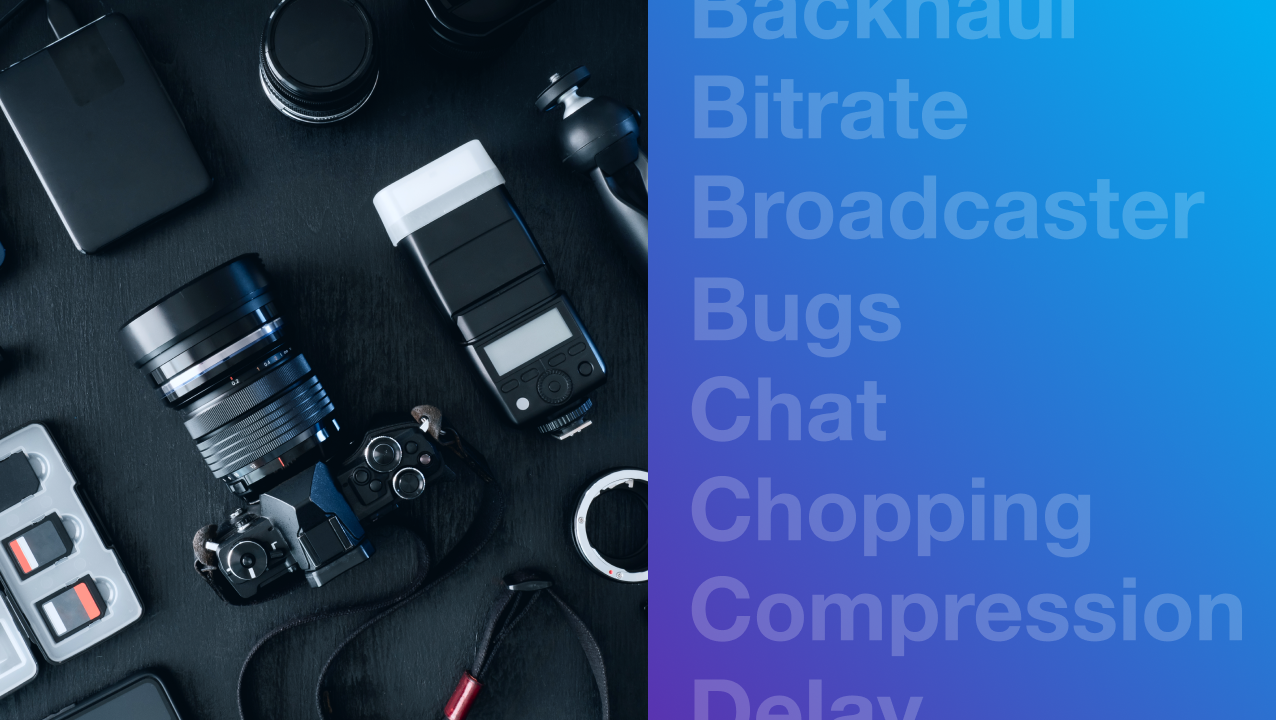Live streaming is an effective way to connect with your audience in real time. But it’s a lot of work, and you can only reach so many people on a single streaming site.
Simulcasting lets you expand your reach by streaming to multiple platforms from a single source. You can broadcast a live-streaming video simultaneously across channels like Facebook Live and LinkedIn, improving its visibility without requiring extra time and effort.
Whether you’re hosting a virtual event or launching a product, simulcasting maximizes your impact. In this article, we’ll explain what simulcasting is. We’ll also explore its benefits and talk about the best live-streaming platforms and software for getting started.
What’s simulcasting?
Simulcasting (i.e., simultaneous casting) involves sending a live video stream to multiple channels at the same time. For example, you might broadcast to YouTube, Facebook Live, LinkedIn, and your own website. This is a way to meet as many viewers as you can on the platforms they prefer, without adding to your workload.
It’s easy to confuse simulcasting with related functionality. Here’s a brief overview of simulcasting vs. multicasting vs. live streaming:
- Live streaming refers to broadcasting video content over the internet in real time, but only to a single platform.
- Multicasting, or multistreaming, means sending a single stream to multiple recipients over a private network, and is often used in enterprise video distribution.
- Simulcasting is sending the same live stream to multiple public platforms at once, such as Twitch and Facebook Live.
What are the benefits of simulcasting?
Simulcasting is growing more popular for businesses, content creators, marketers, and event organizers because it can:
- Grow your audience and attract new viewers: By streaming to multiple channels simultaneously, you extend your reach. Different audiences prefer various websites and social media apps. A live simulcast meets them where they’re at and makes your message accessible to as many people as possible, boosting overall viewership.
- Strengthen your brand’s digital presence: Simulcasting ensures that, at least when it comes to live streaming, your brand has a consistent presence across all the platforms you care about. Maintaining visibility wherever your viewers are reinforces brand recognition and builds credibility.
- Save you time and effort: Instead of running separate live events for each channel or streaming platform, simulcasting allows you to create once and distribute everywhere. This saves time and reduces costs.
- Encourage viewers to engage: When you simulcast, you can interact with viewers directly on their preferred platforms. The time and effort you save can be spent engaging with your audience during the stream, keeping the conversation flowing across all channels.
Try Vimeo Streaming for multi-platform delivery →
How does simulcasting work?
Simulcasting works by transmitting signals to multiple destinations, with each signal sharing the same piece of media. The term originally referred to broadcasting a radio program across different frequencies.
But today, most simulcasting relies on streaming software or a live-streaming platform to send a single RTMP feed to multiple video platforms at once. That process typically looks like this:
- You set up your live stream through an encoder or simulcast software.
- That encoder prepares the video for your chosen platforms by adjusting settings like resolution, bitrate, and file type.
- You upload the stream to a primary service or cloud-based simulcasting platform.
- The service from Step 1 redistributes the same broadcast to multiple channels in real time.
There are a few ways to accomplish this:
- Through simulcasting software: This is the easiest option for most creators. Platforms like Vimeo automate encoding and help you go live on all your channels in just a few steps.
- Via an encoder: This is the most technical option, requiring manual setup of resolutions and bitrates for each destination. It gives you maximum control, but also requires more time and knowledge.
- With a share code: Some services generate codes you can post on individual streaming platforms. When viewers use these codes, they’re redirected to your broadcast. While this isn’t technically simulcasting, it does accomplish a similar result.
How to simulcast using popular platforms: 6 tools
There are many tools that can help you simulcast, even if you’re not technically inclined. Each option varies in setup and compatibility, so it’s important to choose based on your goals and preferred streaming platforms.
Here are some of the most popular options and what they offer for creators.
1. Vimeo
Vimeo’s enterprise-grade live-streaming tools include built-in support for simulcasting. You can broadcast directly to multiple platforms with integrations like LinkedIn and Meta Business Suite.
If you have Vimeo Premium or Enterprise, you can maintain a branded player right on your own website for a professional live experience. Vimeo also provides engagement analytics, customizable privacy settings, monetization features, and support for high-quality video delivery.
Start simulcasting today with Vimeo →
2. Dacast
Dacast is a video hosting solution that supports simulcasting through a centralized dashboard. Users can configure multiple destinations, then stream simultaneously to social platforms and websites. Dacast also includes monetization options like pay-per-view and subscriptions, making it useful for businesses that want to generate revenue from their broadcasts.
Compare Vimeo and Dacast →
3. YouTube Live
While YouTube doesn’t natively simulcast, it can serve as a primary channel when paired with encoding tools that distribute your feed to other platforms. Many streamers use YouTube Live for its discoverability, and pair it with third-party software like Vimeo to extend their reach. Focusing on YouTube does introduce challenges that can frustrate viewers, such as distracting ads and recommendations, which you can avoid by switching to a more flexible video platform.
Compare Vimeo and YouTube →
4. Riverside
Riverside is a live-streaming platform that focuses on high-quality video recording, but it also offers simulcast functionality. It’s designed to maintain professional audio and video quality even with remote viewers. You can stream live sessions to multiple channels, then repurpose the recorded files into video archives, podcasts, social media clips, or training content.
5. Twitch
Twitch is a leading destination for live-streaming video, particularly in the gaming industry. While it's primarily a single-platform service, with a tool like Vimeo’s Livestream Studio you can multistream to Twitch and other platforms simultaneously. This brings in new audiences while keeping your Twitch community engaged.
6. StreamYard
StreamYard is a browser-based studio that prioritizes ease of use. With just a few clicks, you can simulcast to viewers on multiple social channels. StreamYard’s features include on-screen graphics, branded overlays, and live chat integration. It’s approachable for creators and small teams, if somewhat limited in advanced features.
FAQ
What’s simulcasting on Twitch?
Simulcasting means streaming your live video to Twitch and at least one other platform, all at the same time. Be aware of Twitch’s partner agreements, which may limit simulcasting in certain cases.
Are traditional TV broadcasts simulcasting?
The term simulcasting originated in television and radio. Traditionally, simulcasting referred to broadcasting the same program on multiple TV or radio stations. Today, the term usually applies to internet-based live-streaming platforms like Vimeo.
Does simulcasting reduce stream quality?
Simulcasting doesn’t have to limit your stream’s quality. With the right simulcast software, optimized encoding, and adequate bandwidth, your stream quality will remain consistent. However, sending streams to multiple platforms simultaneously does require a strong and stable internet connection or a reliable video host.
Stream everything everywhere all at once with Vimeo
Simulcasting is one of the most effective ways to maximize your live event’s reach. Instead of requiring interested viewers to find you, your content appears wherever they already spend time.
By using a live-streaming platform like Vimeo, you can simulcast across multiple channels while maintaining a polished, professional presentation. Vimeo’s live-streaming video tools also include analytics, privacy controls, and branding features, all of which help businesses and content creators deliver great content at scale.
No matter who your audience is or what kind of event you’re running, Vimeo lets you engage with your entire viewership from one place.



